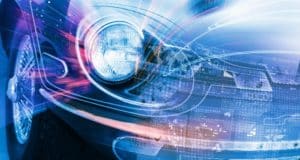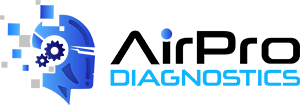 AirPro Diagnostics offers the ultimate in ADAS calibration/ADAS recalibration innovation, technology, and guidance. In this post, we’ll share why this matters so much and describe how our approach can transform auto repair shops and their ability to serve customers well and keep them much safer on the road.
AirPro Diagnostics offers the ultimate in ADAS calibration/ADAS recalibration innovation, technology, and guidance. In this post, we’ll share why this matters so much and describe how our approach can transform auto repair shops and their ability to serve customers well and keep them much safer on the road.
Here’s the AirPro Difference:
- Most advanced ADAS calibration tool
- Leverages OEM licensed software
- Leverages multi-brand diagnostic applications
- Local/resident solution, directly connected to the vehicle
- Operated remotely by our brand specialist technicians
- You benefit from both worlds: local technology operated remotely
If you’re ready to discuss our ADAS calibration equipment, please contact us online today or call us at (904) 717-1711.
What Is the Purpose of Advanced Driver Assistance Systems (ADAS)?
Before getting into the technological aspects of ADAS calibration, it’s important to step back and consider the reasons why car manufacturers have invested in ADAS technologies, and why it’s crucial to keep vehicles in optimal condition.
ADAS saves lives.
According to the U.S. General Services Administration’s Office of Motor Vehicle Management, 6,420,000 car accidents take place in the United States each year. Said another way, a car crash occurs every five seconds in our country—and 98 percent of them have a common cause: human error. That’s nearly 6.3 million accidents annually with too many of them resulting in property damage, injuries, and even fatalities.
Now, here’s the good news.
ADAS significantly reduces the number of accidents. According to the National Safety Council, here are figures that illustrate the reduction of crashes, thanks to ADAS:
- Forward Collision Warning with Autobrake lowers:
◉ Front to rear crashes by 50 percent
◉ Front to rear crashes with injuries by 56 percent
◉ Claim rates for damages to other vehicles by 14 percent
◉ Claim rates for injuries to people in other vehicles by 24 percent
◉ Large truck front to rear crashes by 41 percent
- Automatic Emergency Braking with Pedestrian Detection lowers:
◉ Pedestrian crashes by 27 percent
◉ Pedestrian crashes with injuries by 30 percent
- Lane Departure Warning lowers:
◉ Single vehicle, sideswipe, and head on crashes by 11 percent
◉ Injury crashes of the same type by 21 percent
- Blind Spot Detection lowers:
◉ Lane change crashes by 14 percent
◉ Lane change crashes with injuries by 23 percent
◉ Claim rates for damage to other vehicles by 7 percent
◉ Claim rates for injuries to people in other vehicles: 9 percent
- Rear Automatic Braking lowers:
◉ Back crashes when combined with rearview camera and parking sensors by 78 percent
◉ Claim rates for damage to other vehicles by 28 percent
◉ Claim rates for damage to insured vehicles by 10 percent
So, as you consider bringing ADAS calibration equipment into your auto repair shop, these statistics show how highly accurate recalibration truly does keep people much safer on the road.
Here’s another perspective: a proactive one. According to the AAA Foundation for Traffic Safety:
- Forward collision warnings and automatic emergency braking systems have the potential to prevent:
◉ 29 percent of crashes
◉ 29 percent of injuries
◉ 14 percent of deaths
- Lane departure warnings and lane keeping assistance systems have the potential to prevent:
◉ 7 percent of crashes
◉ 6 percent of injuries
◉ 14 percent of deaths
- Blind spot monitoring systems have the potential to prevent:
◉ 5 percent of crashes
◉ 3 percent of injuries
◉ 1 percent of deaths
Every life matters, and the case is clear. Properly calibrated ADAS vehicles reduce crashes and injuries, and save lives.
What Is ADAS Calibration Equipment?
After a collision, sensors and cameras can shift, and even a slight deviation can make a catastrophic difference on the road. Here’s an overview of our twelve step calibration process, one where a small difference in recalibration can make a big difference:
ADAS technologies commonly found in vehicles today include the following:
- Adaptive cruise control
- Automatic emergency braking systems (AEB)
- Automatic navigational systems
- Blind spot detection
- Collision avoidance systems
- Driver drowsiness detection
- Electric vehicle warning systems
- Forward collision warnings
- Hill defense control systems
- Lane departure warnings
- Night detection devices
- Parking assistance technology
- Pedestrian presence warnings
- Rain sensors
- Smart speed adaptation
- Steering angle management
- Surround-view systems
- Tire pressure monitoring
- Traffic sign recognition
Some are reasonably simple systems to calibrate while others are more complex. To add to the complexities, about forty vehicle manufacturers are currently producing hundreds of models—and each can come with unique ASAS sensors and cameras, placed and positioned in different ways. This means that no one-size-fits-all solution exists, so an ADAS calibration tool must have both broad applications and very specific niche abilities.
Here’s how AirPro’s ADAS calibration equipment works. This advanced solution uses OEM licensed software and multi-brand diagnostic applications with the technology automatically updated so your version is always cutting-edge current.
Next, the hardware is directly connected to the vehicle being repaired, a technique that’s required by some manufacturers today (with all vehicles benefitting from this direct approach and our comprehensive applications).
You’ll be quickly connected to the appropriate brand specialist technician (within ten minutes although we’re typically much faster than that). This expert technician will operate the tool. This is more efficient and effective than other approaches taken, such as sending software back and forth across the internet or using tools and software located elsewhere. This combines the best of both approaches: a local, resident connection with the vehicle along with software being remotely operated by brand experts.
This approach allows you to bring in (or keep) ADAS recalibration services in-house, permitting you to add or maintain a revenue stream—even as ADAS technologies become increasingly more intricate. You don’t need a wide range of brand specialists/in-house, because you can rapidly connect with just the right ones through our ORION cloud-based diagnostic management system.
Our technology will allow you to uncover repair and calibration issues that might otherwise have gone undetected. This allows you to present a comprehensive report to your customers that includes a more accurate ADAS calibration price. When incomplete reports are initially provided—and additional issues are discovered later in the process—this can be frustrating to clients and repair personnel alike.
What Is Windshield ADAS Calibration Equipment?
AirPro Diagnostics’ hardware and our ORION diagnostic management system also allows you to recalibrate windshields after they’ve been repaired or replaced. Forward-facing cameras, for example, will need calibration to work properly again and keep people safe on the road. Other systems that may need recalibration can include crash avoidance radar systems, collision avoidance braking, lane departure warnings, and adaptive cruise control systems.
Just like with any other calibration, specifics will vary by the damage done, the vehicle’s year, make, and model, and more. Our brand specialists will guide you through the process.
What Is the Difference Between Static and Dynamic Calibration?
Manufacturers sometimes require static calibrations after a repair while, other times, dynamic calibrations are needed. With static ones, the vehicle is calibrated while parked in place inside of an auto repair shop. The ADAS system calibration machines will be used to ensure that sensors meet a series of OEM-defined targets when the vehicle is a defined distance from the targets.
Dynamic calibrations, meanwhile, are performed on the road because most of the work is done while the vehicle is being driven. Although the process starts in the shop, at some point the repair personnel will drive the car to reset sensors and assess completion.
What’s crucial during both kinds: precisely following OEM recommendations during the process.
How ADAS Calibration Tool Takes You From Start to Finish
Our ADAS calibration equipment and cloud-based diagnostic management software will guide you throughout the entire process: from when you first receive a vehicle needing repairs to getting it back on the road with ADAS recalibrations completed.
At a high level, the process will look like this:
1. Manually inspect the vehicle. Besides looking for visible damage, check to see where ADAS sensors, cameras, and more may have sustained damage.
2. Verify that malfunction indicator lamps operate.
3. Document unusual sounds and smells.
4. See if airbags have deployed. Also check knee bolsters and seatbelts.
5. Next up: automotive pre-scanning. Using our AirPro technology, a brand specialist will identify collision damage as part of the automotive diagnostics procedure, and indicate what ADAS calibration may be needed.
6. Check your pre-scan report for the vehicle’s baseline condition. Save this as a reference point throughout the repair and calibration process.
7. Make physical repairs to the vehicle
8. Request a post-scan where our brand specialist technician will remotely test all systems.
9. Our technician will also conduct resets and legacy calibrations—and then ADAS recalibrations.
10. One of your team members will complete a road test and dynamic systems verification. This allows you to verify that all vehicle systems are programmed as they should be: reset to factory defaults and working well.
11. Connect our AirPro tool again for a final scan. At this point, no codes or system faults should appear.
12. Return the vehicle to the customer when all is completed.
The Benefits of In-House Automotive Calibration Services
First, you can expand the number of valuable services that you provide your customers. This can help to enhance your reputation and attract new business. Because you’ll no longer need to outsource the calibration phase of vehicle repairs to a third-party, you can bring in a new revenue source; reduce cycle time because you no longer need to fit into the schedule of a calibration shop; and you won’t need to factor paying in a third party when determining an ADAS calibration price. Your quality service will please customers and help to build loyalty and encourage word of mouth marketing.
When using AirPro hardware and our ORION cloud-based diagnostic software, you’ll have the expertise of a broad range of brand specialists at your fingertips. When you request a service, we’ll rapidly respond, providing unsurpassed expertise throughout the process. This includes personalized support through each calibration step in ways that dovetail with manufacturer specifications.
Here’s an additional benefit, one that may not be considered as much as it should. Having quality ADAS calibration equipment and personalized support can help to attract quality employees who appreciate having world-class technology. It can also help to retain employees, something that’s challenging in today’s times, by providing them with the tools they need to effectively do their jobs.
Hardware and software are automatically updated so you’ll always have the best technology at your fingertips. When that happens, there’s no charge to you. That’s our promise; our Evergreen Warranty. Plus, because our remote system is, by definition, touch-free, this greatly reduces the chances that contagious pathogens can get into your auto repair shop. In the COVID era, this is more important than it’s ever been.
Choose AirPro Diagnostics for Your ADAS Calibration Tool
We’re the trusted leaders in remote calibration services, and we focus on continually improving our offerings. As vehicle manufacturers continue to enhance their technologies, we work alongside them to keep offering auto repair shops like yours with the ultimate in ADAS calibration equipment, processes, and brand specialist support.
AirPro Diagnostics focuses on increasing your auto shop’s productivity and profitability in ways that will also enhance customer satisfaction for you. Our technology protects you in multiple ways, including to reduce your risk and limit your liability while guiding you along processes that will enhance safety on the road.
At the start of this post, we shared statistics about how—and how much—ADAS technology helps to reduce accidents. When crashes happen, they are less costly: in dollars, damage, and injuries—and in a way that’s priceless: helping to save lives.
Because of the importance of highly accurate calibrations, we align with vehicle manufacturers and like-minded vendors only. In our quest for perfection, we maintain the highest standards. We never compromise on excellence. We never compromise on integrity. Because we never use shortcuts that could harm the quality of processes or results, you can count on us today, tomorrow, and into the future.
The reality is that we built our reputation by protecting and enhancing yours.
To get started with our ADAS calibration equipment and to experience all of its benefits (or to get answers to your questions), please contact us online or call (904) 717-1711.

